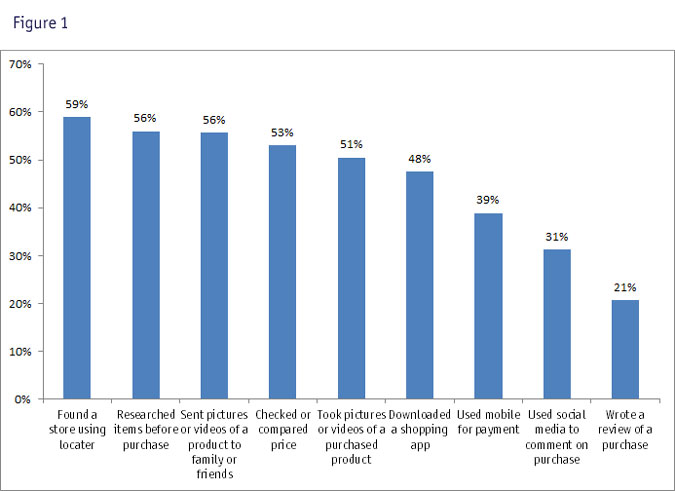Editor's note: Dinaz Kachhi is senior manager, research insights, at uSamp, an Encino, Calif., research company. Fan Dong is research specialist at uSamp. They can be reached at dinaz@usamp.com and fan@usamp.com, respectively. This article appeared in the December 10, 2012, edition of Quirk's e-newsletter.
Retailers are in the throes of the most exciting and critical time of the year: the holidays. From big-box stores to mom-and-pop shops, everyone is sharpening their strategies in attempt to make big numbers. Needless to say, all hands are on deck to find the most direct path to customers. To that end, mobile has been the focus of many big brands as it is an effective medium for targeting shoppers in the moment, influencing purchase decisions and further simplifying transactions. While retailers can more accurately target shoppers through mobile (via location and demographic information), shoppers can use mobile to compare prices and find good deals. Smartphones truly bring the world to shoppers' fingertips.
To better understand the landscape of shopping on mobile devices, uSamp administered a survey to 1,187 panelists over the course of two days at the end of August. The survey focused on measuring shoppers' behavior and purchasing habits on mobile devices.
Types of purchases
The medium itself influenced the types of purchases made on smartphones: 25 percent of respondents purchased digital content (i.e., music, ringtones, apps, music, videos, etc.), followed by books (20 percent), clothing and movie tickets (17 percent). Birthdays and Christmas were identified as the top two occasions for smartphone shopping. These findings should encourage brands to more aggressively market other product categories and promote mobile on different occasions by offering deals that attract new customers in-store or online.
Interactivity
The media capabilities on smartphone devices greatly contribute to interactivity, as 50 percent of respondents reported researching products and sharing pictures of products purchased (Figure 1). Forty-eight percent of respondents reported downloading a shopping app. These findings emphasize that mobile will continue to penetrate this space where shoppers can be proactive in voicing and sharing their experience with retailers and each other. In regard to demographic differences, both men and women were equally engaged in mobile shopping.

Types of apps downloaded
The findings also revealed a few interesting trends in types of apps downloaded. The most popular apps offered ways to organize or save on shopping. Ten percent of respondents reported downloading e-commerce apps like eBay or Amazon and QR/barcode scanning apps and 8 percent reported downloading group purchase apps such as Groupon or LivingSocial. Additionally, 61 percent reported opting in to location-based service with the intention of receiving relevant reviews, store information or coupons.
Familiarity and frequency
With the availability of numerous shopping apps, we wanted to understand what drove respondents to download. Familiarity and frequency played an important role, as 64 percent of respondents were inclined to download an app for stores they visited regularly. This finding justifies that shoppers are ultimately interested in investing their time wisely and downloading apps that are most useful to their daily needs. Additionally, most respondents trusted shopping via mobile apps and expressed few inhibitions regarding security, privacy and data breaches.
Master mobile
All in all, the findings reveal that it will be critical for retailers to master mobile and customize their Web sites for mobile to provide a unique experience to their customers. Those that continue to think Web site first and mobile second will experience difficulty, as the smartphone morphs into the primary medium for online shopping.
